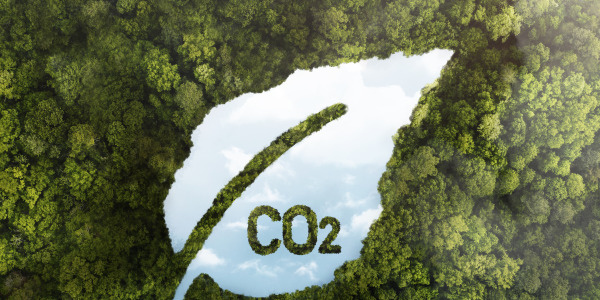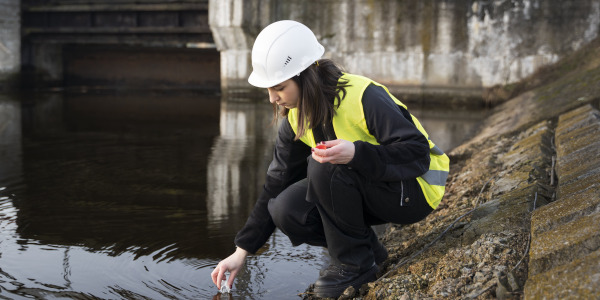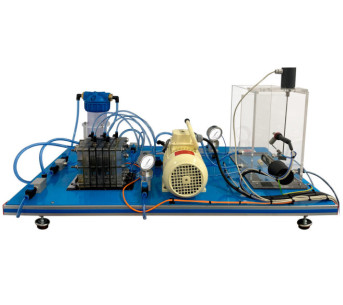PCGC 气体旋风分离器,计算机控制(PC)
創新系統
The Computer Controlled Gas Cyclone, "PCGC", is a unit designed to study the separation of heterogeneous mixtures through a cyclone, specifically those made up of a thin material (4 μm – 400 μm) and an air flow. The cyclone, the main component of this system, separates the solid particles of the air flow so it comes out clean.
扩展
化验室
相關新聞
一般說明
The Computer Controlled Gas Cyclone, "PCGC", is a unit designed to study the separation of heterogeneous mixtures through a cyclone, specifically those made up of a thin material (4 μm – 400 μm) and an air flow. The cyclone, the main component of this system, separates the solid particles of the air flow so it comes out clean.
A fan aspirates generating the air flow through the conduit, crossing a flow sensor that detects the air flow.
The speed of the fan can be controlled from the computer. It also includes a valve to control the speed manually. A filter prevents other unwanted particles from entering, guaranteeing a good quality air. Next, a solid dispersion motor system impels the solids to the conduit, where they are mixed with the air flow.
When the mixture is ready the flow reaches the cyclone separator. The flow temperature is measured before entering. The air flows in a helical pattern, starting from the highest of the cyclone to the lowest and ending in an ascending central flow that exits through the outlet pipe (in the uppermost part of the cyclone). The larger and denser particles in the rotary flow have too much inertia to follow the strong upward curve in the bottom of the cyclone. They collide with the wall and fall to the lowest part of the cyclone, where they are collected in a glass tank.
A differential pressure sensor allows the study of the pressure drop between the inlet and the outlet of the cyclone.
Finally, air is filtered again at the end of the conduit to guarantee that there are no suspended particles left.
This Computer Controlled Unit is supplied with the EDIBON Computer Control System (SCADA), and includes: The unit itself + a Control Interface Box + a Data Acquisition Board + Computer Control, Data Acquisition and Data Management Software Packages, for controlling the process and all parameters involved in the process.
練習和指導練習
手册中包含的指导实践练习
- Study of the operation of a cyclone separator.
- Study of the size of solids or air flow versus pressure drop in the cyclone.
- Calculation of the cyclone separation efficiency and variation of this value in function of the air flow and the amount of added solids.
- Comparison of the cyclone efficiency experimentally obtained with the theoretical calculations.
- Study of the pressure drop at the inlet and outlet of the cyclone.
- Comparison of the pressure drop experimentally obtained with the theoretical calculations.
- Determination of the separation size (spectrophotometer required).
- Influence of the air flow and the amount of added solids on the separation size (spectrophotometer required).
- Sensors calibration.
与该单位进行更多实际操作
- Many students view results simultaneously. To view all results in real time in the classroom by means of a projector or an electronic whiteboard.
- Open Control, Multicontrol and Real Time Control. This unit allows intrinsically and/or extrinsically to change the span, gains, proportional, integral, derivative parameters, etc, in real time.
- The Computer Control System with SCADA allows a real industrial simulation.
- This unit is totally safe as uses mechanical, electrical and electronic, and software safety devices.
- This unit can be used for doing applied research.
- This unit can be used for giving training courses to Industries even to other Technical Education Institutions.
- Control of the PCGC unit process through the control interface box without the computer.
- Visualization of all the sensors values used in the PCGC unit process.
- By using PLC-PI additional 19 more exercises can be done.
- Several other exercises can be done and designed by the user.
配套设备
半连续离心分离器,容量1000升,由计算机和触摸屏控制 (PC)
Computer Controlled Continuous and Batch Filtration Unit
Continuous and Batch Filtration Unit
板框过滤机,计算机控制 (PC)
计算机控制深床过滤装备
深床过滤装置
泥沙研究设备
计算机控制沉淀池
沉淀池
计算机控制排水和防渗水槽
排水和防渗水槽
質量

售後服務

 Cookies首选项
Cookies首选项























